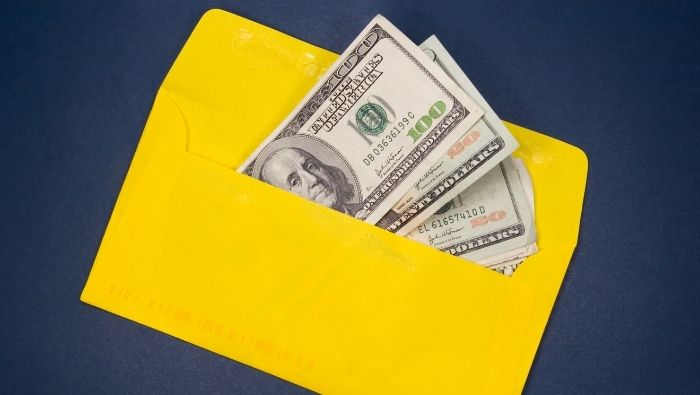The Envelope Budgeting System in a Cashless Society
by Gary Foreman

An envelope budgeting system can be a very effective money management tool. We explore how to effectively bring this old budgeting tool into the digital age.
Dear Gary,
My family has been trying to work with a budget for the past several months, but the “envelope” system is just not practical with our primarily cashless lifestyle.
How can I track our cashless expenditures for gas, groceries, personal items, etc. and still know how much is left in each category as the month goes on?
Lisa
Lisa’s right. Some of the old budgeting tools like the envelope system don’t work so well today. Very few of our purchases are made with cash. So merely controlling cash isn’t an effective budget tool.
The primary purpose of a budget in mind
Before we look specifically at Lisa’s question, let’s spend a moment to talk about how budgets can be used.
A budget is a wonderful way of collecting information about your finances and presenting it in a way that’s useful to you.
A simple monthly budget can tell you at a glance where your money is going. When compared to previous months, it can tell you what’s changing in your spending patterns.
That’s important. Just knowing that your electric bill is higher could help you identify an air conditioner that needs servicing before it breaks down completely. It’s also a good way to find potential savings. If you need to reduce spending by $250 a month, don’t look in a category where you only spend $300.
Sign Up for Savings
Subscribe to get money-saving content by email that can help you stretch your dollars further.
Twice each week, you'll receive articles and tips that can help you free up and keep more of your hard-earned money, even on the tightest of budgets.
We respect your privacy. Unsubscribe at any time.
Another purpose of a budget
Lisa is attempting to use her budget for its second purpose. A budget can provide discipline and control overspending.
There are variations, but in the basic envelope system, Lisa would cash her paycheck. She would have a number of envelopes for the different categories of spending, such as rent, food, transportation and so on. Cash from her paycheck would be divided into the various envelopes based on how much she felt she needed in that category.
For instance, if she got paid weekly and expected to spend $40 per week on groceries, $40 would go into the “grocery” envelope. When she went to the store, she’d take the “grocery” envelope with her and pay for her purchases with the money in the envelope. If she got to the checkout and had more than $40 worth of groceries in her cart, she could return some groceries or take some cash from another envelope. Of course, that meant that she’d have less to spend in the envelope she stole from until the next payday.
The envelope system worked well when we used cash for all of our purchases. You immediately knew if you could afford a purchase. Moving money from one envelope to another was a warning sign that you could be getting into trouble.
Duplicating the envelope budgeting system digitally
Unfortunately, very few of us use much cash anymore. We’re much more likely to pull out a credit/debit card or buy online.
One easy way to duplicate the envelope system is to use rechargeable debit cards. When you get paid, instead of putting cash into an envelope, add it to a debit card. Have a debit card for every category that used to be an envelope.
Or Lisa could use a “pretend envelope” system. She would set it up just as if she were going to use an envelope system. But she wouldn’t actually put cash into the envelopes. Instead, on the front of the envelope, she’ll list how much money is assigned to it. As she spends cash or makes charges, she’d subtract that money from the balance listed on the front of the envelope. When the running balance on the front of the envelope got to zero, she’d have to quit spending in that category or “move” money from another envelope.
Another way would be to use one or more sheets to keep a running balance for each category. She could have one sheet represent each envelope. Or she could have one sheet per month that contained the balances for all of the envelopes. The sheets, or perhaps a small spiral notebook, could be kept in her pocket, purse or even digitally on her phone.
Not sure where to start with making a budget?
The affordable Home Budget Spreadsheet from SimplePlanning.com makes budgeting simple.
A virtual caution
The danger in any virtual envelope plan is that you’ll forget to make the entry and your balance will appear bigger than it is.
One way to avoid that is to put any receipt into your pocket or purse. When you get home you can deduct the expense from the proper envelope and place the receipt inside.
Lisa is wise to recognize the limitations of any tool that she uses. But, she’s also smart to look for a system to help her keep her finances in line.
Reviewed February 2023
About the Author
Gary Foreman is the former owner and editor of The Dollar Stretcher. He's the author of How to Conquer Debt No Matter How Much You Have and has been featured in MSN Money, Yahoo Finance, Fox Business, The Nightly Business Report, US News Money, Credit.com and CreditCards.com.
Sign Up for Savings
Subscribe to get money-saving content by email that can help you stretch your dollars further.
Twice each week, you'll receive articles and tips that can help you free up and keep more of your hard-earned money, even on the tightest of budgets.
We respect your privacy. Unsubscribe at any time.
Wouldn't you like to be a Stretcher too?
Subscribe to get our money-saving content twice per week by email and start living better for less.
We respect your privacy. Unsubscribe at any time.
Popular Articles
- 7 Habits of Highly Frugal People
- 5 Simple Budget Cuts That Can Save $200 a Month
- How to Track Down Unclaimed Funds Owed You
- 32 Ways to Save Money on Your Utility Bills
- Do You Need Credit Life Insurance When Buying a New Car?
- How to Maximize Profits When Selling Online
- Staying Motivated to Continue Digging Yourself Out of Debt
On After50Finances.com
- 9 Things You Need to Do Before You Retire
- You Didn’t Save Enough for Retirement and You’re 55+
- When Empty Nesters Reorganize and Declutter Their Home
- Reinventing Your Career in Your 50s or 60s
- What Mature Homeowners Should Know about Reverse Mortgages
- 2 Reasons to Collect Social Security Benefits As Soon As Possible


